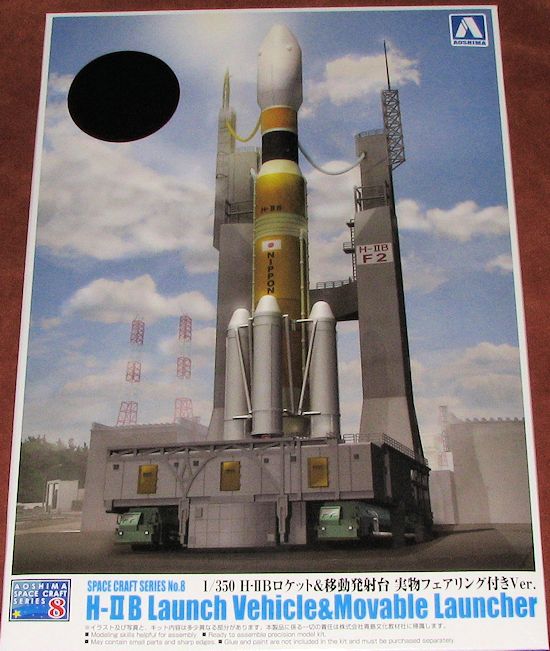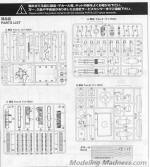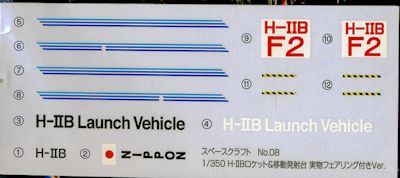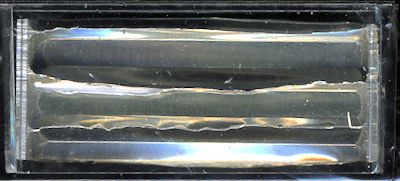
Aoshima 1/350 H-IIB Launch Vehicle & Mobile Launcher
| KIT #: | 005101 |
| PRICE: |
$60.00 SRP |
| DECALS: | One option |
| REVIEWER: | Scott Van Aken |
| NOTES: |
|

| HISTORY |
H-IIB (H2B) is an expendable launch system used to launch H-II Transfer Vehicles (HTV) towards the International Space Station. H-IIB rockets are liquid-fuelled with solid-fuel strap-on boosters and are launched from the Tanegashima Space Center in Japan. Mitsubishi and JAXA have been primarily responsible for design, manufacture, and operation of H-IIB.
H-IIB is able to carry a payload of up to 8 tons to GTO, compared with the payload of 4 to 6 tons for the H-IIA. Its performance to LEO is sufficient for the HTV (16,500 kg). The first H-IIB was launched in September 2009.
The H-IIB launch vehicle is a launch vehicle developed jointly by JAXA and Mitsubishi Heavy Industries to launch the H-II Transfer Vehicle. The H-IIB was designed to adopt methods and components that have already been verified by flights on the H-IIA, so that manufacturing the new launch vehicle would be more cost-effective, with less risk, in a shorter period of time. JAXA was in charge of preliminary design, readiness of the ground facility, and the development of new technologies for the H-IIB, in which the private sector has limited competencies, while the Mitsubishi Heavy Industries is responsible for manufacturing. JAXA successfully conducted eight firing tests of the new cluster design with the simulated first-stage propulsion system, called Battleship Firing Tests, since March 2008, at MHI's Tashiro Test Facility in Odate, Akita Prefecture.
Before launch, two Captive Firing Tests were conducted on the H-IIB. The first test, which consisted of firing the first stage for ten seconds, was originally scheduled to occur at 02:30 GMT on 27 March 2009, however it was cancelled after the launch pad's coolant system failed to activate. This was later discovered to have been due to a manual supply valve not being open. The test was rescheduled for 1 April, but then postponed again due to a leak in a pipe associated with the launch facility's fire suppression system. The test was rescheduled for 2 April, when it was successfully conducted at 05:00 GMT. Following this, the second test, which involved a 150 second burn of the first stage, was scheduled for 20 April. This was successfully conducted at 04:00 GMT on 22 April, following a two day delay due to unfavourable weather conditions. A ground test, using a battleship mockup of the rocket was subsequently conducted on 11 July.
The development program of the H-IIB cost around 27 billion yen.
The H-IIB launch vehicle is a two-stage rocket. The first stage uses liquid oxygen and liquid hydrogen as propellants and has four strap-on solid rocket boosters (SRB-A3) powered by polybutadiene. The first stage is powered by two LE-7A engines, instead of one for the H-IIA. It has four SRB-As attached to the body, while the standard version of H-IIA has two SRB-As. In addition, the first-stage body of the H-IIB is 5.2m in diameter compared with 4m for the H-IIA. The total length of the first stage is extended by 1m from that of H-IIA. As a result the H-IIB first stage holds 1.7 times more propellant than that of the H-IIA. The second stage is powered by a single LE-5B engine.
| THE KIT |
 Aoshima
has been one of the driving forces behind all the modern space kits we have been
enjoying in the past few years. They have been concentrating their efforts on
things that are pretty much Japanese. Few people realize that Japan has a pretty
healthy space program and while it does not concentrate on manned missions, they
are on their way.
Aoshima
has been one of the driving forces behind all the modern space kits we have been
enjoying in the past few years. They have been concentrating their efforts on
things that are pretty much Japanese. Few people realize that Japan has a pretty
healthy space program and while it does not concentrate on manned missions, they
are on their way.
This kit is of their standard launch vehicle and is molded in white, grey and clear plastic. The white parts are pretty much for the launch vehicle. This includes the main body of the rocket and the four boosters. The nose cone and second stage outer shell are also available on the clear sprue. This is to show the rocket engine for the second stage and to allow the HTV module to be displayed under the nose cone. This all sits on a base that provides a clear part for the initial blast of smoke from the rocket engine itself. For those who wish to do so, an in-flight stand is provided as well. Either of these options will fit onto a nice base.
However, many of us will want to go farther in construction and mount
the rocket onto the launch base. This base includes not only the detail of the
base itself but also includes two tall gantries. This entire
 assembly
will fit atop two removable multi-wheeled crawler assemblies. When using the
gantry sections, the kit does include the power and fuel cables, making for a
very impressive display. Fortunately for the space conscious, this kit is 1/350
scale so will not overwhelm your display shelf!
assembly
will fit atop two removable multi-wheeled crawler assemblies. When using the
gantry sections, the kit does include the power and fuel cables, making for a
very impressive display. Fortunately for the space conscious, this kit is 1/350
scale so will not overwhelm your display shelf!

| CONCLUSIONS |
| REFERENCES |
Wikipedia, but I forget the actual URL.
March 2013 Thanks to
www.dragonmodelsusa.com for the preview kit. Get yours
today at your local shop or on-line retailer. If you would like your product reviewed fairly and fairly quickly, please contact the editor or see other details in the
Note to
Contributors.